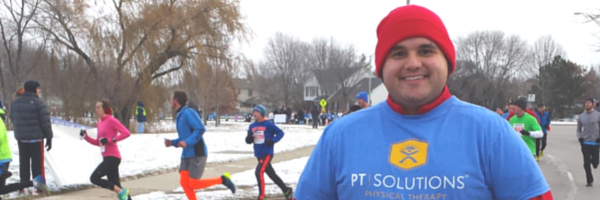Keeping Your Routine up as Temperatures Drop: What You Need to Know about Cold Weather Running

Cold winter weather may find you easing off of your running routine, but winter is the perfect time to pick up the pace. Endorphins that fuel a runner’s high are especially helpful in combating depression and seasonal affective disorder during winter’s dark, cold days. What’s more, running is a perfect way to kick-start a healthy new year after the many cookies and cups of eggnog indulged during the holiday season!
Check out these tips to keep yourself safe and healthy during your cold-weather runs.
Dress for Warmth
Running involves heavy exertion, guaranteed to work up a sweat and get the blood pumping. With that in mind, dress as if it is 20 degrees warmer than it actually is. Runner’s World suggests that you layer your clothes and choose items that have zippers at the neck and underarms so air can circulate as you heat up during the workout. Combine your footwear with wool socks that are made to wick away moisture for extra protection.
The New York Road Runners, a group experienced with the joys of running in subfreezing temperatures, emphasize the need to protect your head and hands. They recommend a hat made with wicking material for your head and a facemask or scarf to protect your neck and face. Gloves are also essential to keep your fingers warm and safe from frostbite.
Be Visible
Even during the day, you will often be less visible to motorists during winter months, especially on plowed streets with snow banks. If you run at night, it’s even more of a challenge to be seen unless you light yourself up with reflective, fluorescent clothing and gear. Consider using a headlamp, or at least carry a flashlight. You’ll see the pavement better, and others will see you.
Run Smart
Winter isn’t necessarily the time to work on speed. Instead, slow down and shorten your running stride when dealing with rain, snow, sleet, and ice. Pay close attention to where you put your feet to avoid accidents and injury.
Work on maintaining your conditioning and increasing endurance during the winter months. If possible, run during the middle of the day when temperatures are warmer. If that doesn’t fit your schedule, consider breaking your workouts into two parts; for example, two miles in the morning and two in the evening. You’ll be out in freezing temperatures for shorter periods.
Winter running is good for your mood and your fitness. By modifying your workout routine slightly, you can keep up your training on even the coldest days.
If you’re looking for running gear or just some additional advice on how best to prepare for winter running, stop by PTS Sports, PT Solutions athletic goods store dedicated to both endurance athletes and those that aspire to be. PTS Sports is located in Sweet Apple Village at 12050 Etris Rd. Suite E140, Roswell, GA 30075.
Learn more at PTS Sports.